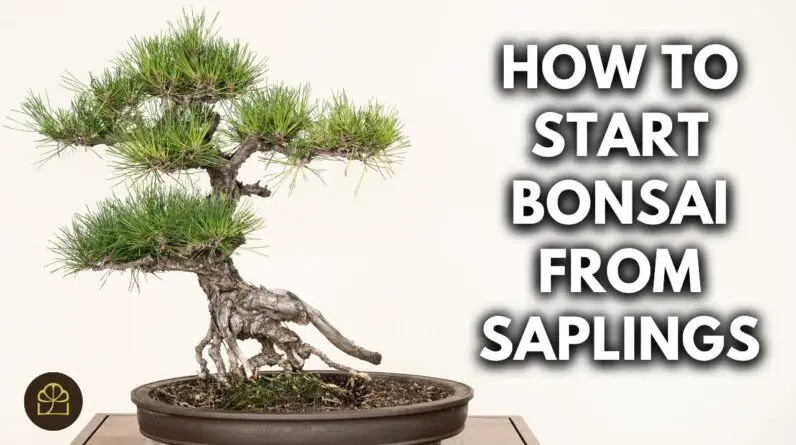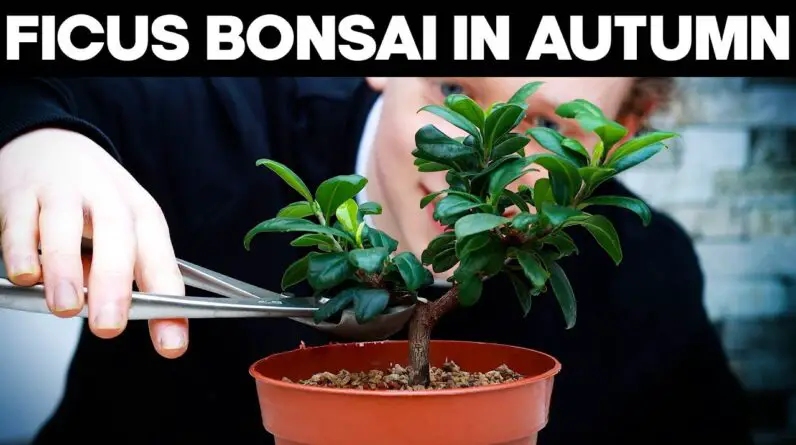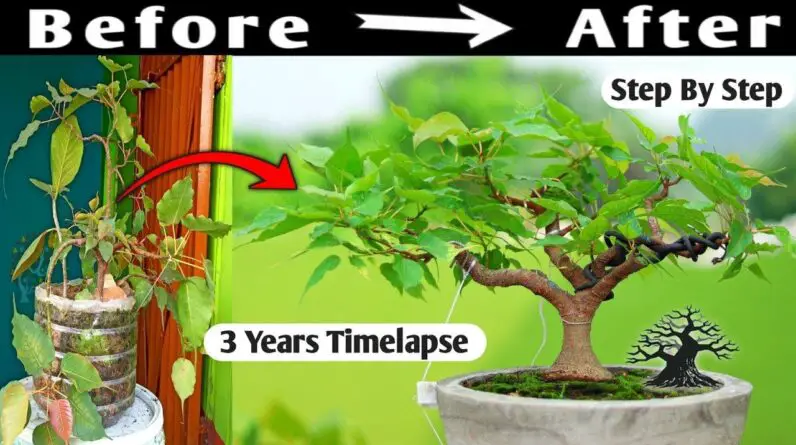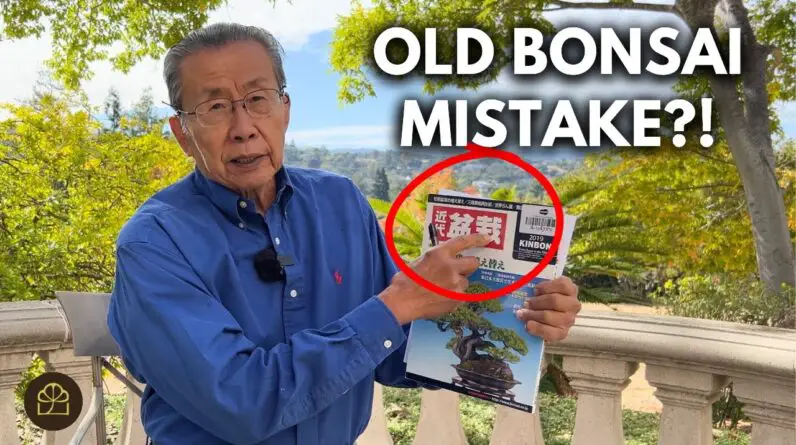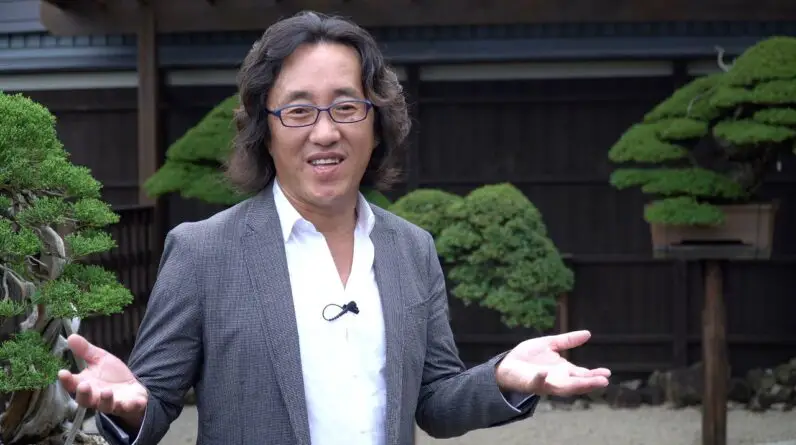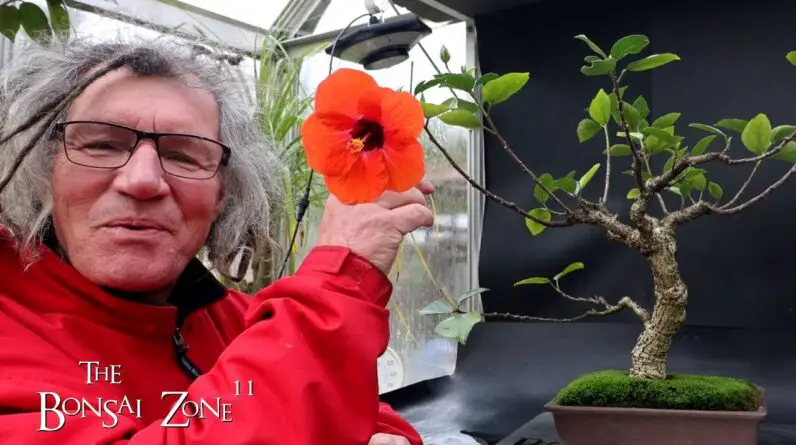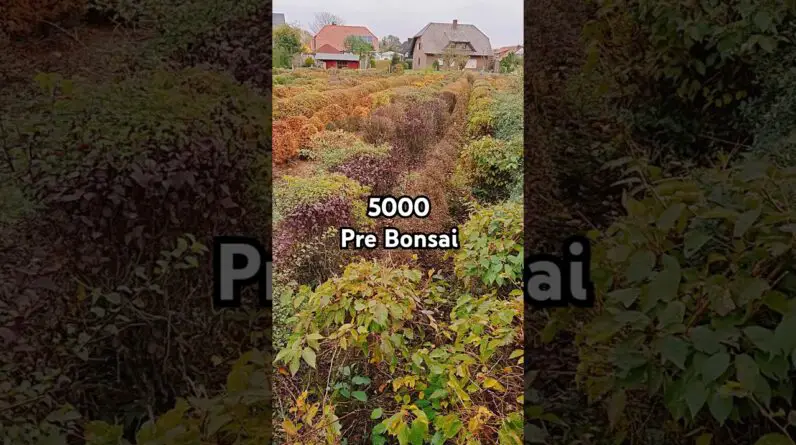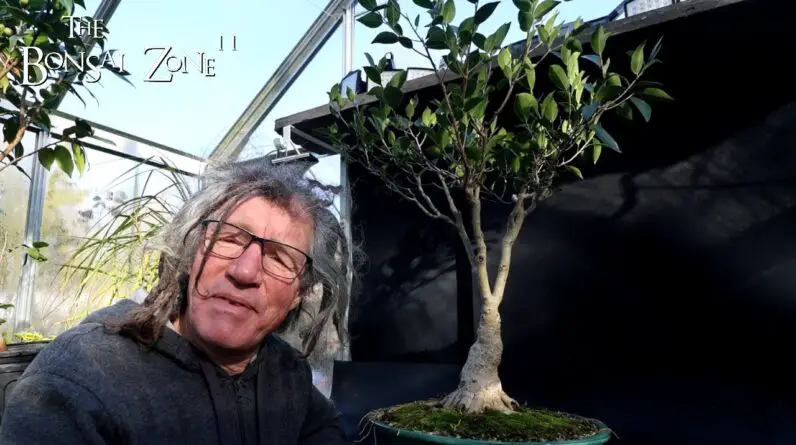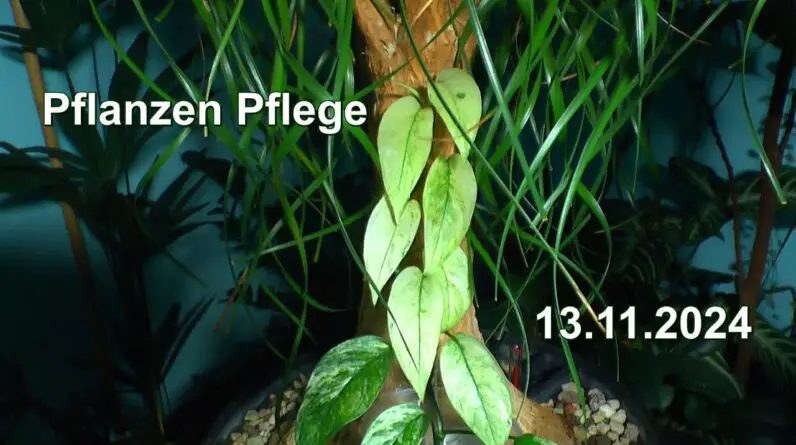Intend to find out just how to make an Apple bonsai tree? In this video clip by Bonsai Empire, they show you how to prune and wire an Apple tree that is around 15 years of ages. The video clip was shot throughout fall, when the tree was full of little apple trees.
Bonsai Empire is passionate regarding sharing the living art of Bonsai and produced this do it yourself tutorial to help and inspire novices. This video clip belongs to their online training courses, but they supply several various other totally free video clips too.
So if you want finding out more concerning Bonsai strategies, head over to Bonsai Realm’s website!
In the video clip, they clarify the procedure of trimming and electrical wiring this Apple bonsai tree. They use small pruning shears, pliers, and cord cutters. The leading branch is the very first to be trimmed, and after that they concentrate on two thicker branches to attain the preferred shape.
They show the significance of a 360-degree method when trimming and circuitry to prevent any dead angles. After the trimming and wiring, the tree looks extra polished and balanced. With routine upkeep, this tree will certainly continue to thrive and expand new branches in the upcoming spring. If you wish to find out more concerning trimming, circuitry, and repotting methods, think about joining Bonsai Realm’s on the internet courses and get to expert advice and the possibility to ask the instructors inquiries directly.
Apple Bonsai Tree: An Intro
Welcome to the globe of apple bonsai trees! Producing and cultivating a small apple tree can be a rewarding and meeting pastime. Not just do these bonsai trees give a gorgeous aesthetic, yet they likewise supply the possibility to grow your own fruits in a small and workable area.
In this thorough post, we will certainly direct you through the process of picking the appropriate apple tree range, collecting the necessary products, growing the tree from seeds, trimming and wiring methods, appropriate upkeep, potting factors to consider, and the differences between outside and interior apple bonsai trees.
Think about the Size of the Bonsai
When choosing an apple tree variety for bonsai farming, it is necessary to think about the best dimension of the tree. Since bonsai trees are implied to be miniature versions of their larger counterparts, picking a variety that naturally stays little is essential. Look for apple tree varieties that are known for their small development and smaller sized stature, such as columnar apple trees or normally dwarf varieties. This will certainly make certain that your bonsai remains in proportion and is much easier to handle.
Select a Crab Apple Tree Selection
Crab apple trees, with their little and vivid fruits, are usually the recommended option for apple bonsai farming. These trees naturally have much more delicate and proportional features, making them appropriate for bonsai visual appeal. Furthermore, crab apple trees are durable and versatile, making them simpler to look after and keep as bonsai samplings. Take into consideration selections such as Malus sylvestris or Malus floribunda, which are typically utilized in bonsai farming.
Consider the Environment and Location
Prior to deciding on the apple tree variety for your bonsai, it is very important to think about the climate and area where you plan to grow it. Various apple tree varieties prosper in different environments, so select a variety that is fit to your certain area. Additionally, remember the amount of sunlight and temperature level needs of the chosen selection. Most apple trees call for full sunlight to grow, so ensure that your picked location supplies adequate sunlight throughout the day.
Select a Suitable Bonsai Pot
Selecting the right bonsai pot is important for the health and wellness and aesthetics of your apple bonsai tree. Look for a pot that is in proportion to the size of your tree and complements its general design. Bonsai pots are available in different products such as ceramic, plastic, or clay. Each material has its own benefits and factors to consider, so pick one that matches your personal preferences and the specific requirements of your apple bonsai tree.
Acquire Quality Bonsai Dirt
Top notch bonsai soil is important for the healthy growth of your apple bonsai tree. The dirt must offer ample drainage while preserving sufficient moisture for the tree’s roots. You can purchase pre-made bonsai dirt blends that are particularly developed for bonsai cultivation, or you can produce your own mix by integrating elements such as Akadama, pumice, and lava rock. Testing with different soil combinations may be necessary to discover the excellent balance for your apple bonsai tree.
Get Trimming and Wiring Devices
Trimming and electrical wiring are necessary strategies for forming and keeping the type of your apple bonsai tree. To efficiently prune and wire your bonsai, you will certainly require a set of proper devices. Some essential devices consist of a scooped branch cutter for specific pruning, bonsai cord cutters for managing the cable, and pliers or tweezers for elaborate work. Invest in top notch tools to guarantee accuracy and minimize damage to your apple bonsai tree.
Gathering Apple Seeds
One of the most fulfilling ways to begin an apple bonsai tree is by growing it from seeds. You can collect apple seeds from ripe fruits or buy them from reputable suppliers. Make certain that the seeds are fresh and sensible for the very best chances of germination.
Prep work of Seeds for Planting
Prior to growing the apple seeds, it’s important to prepare them for ideal germination. Start by soaking the seeds in water for 24 hours to soften the external seed layer. After soaking, remove the seeds from the water and allow them to completely dry for a couple of days. This procedure helps damage the seed’s dormancy and enhances the possibilities of effective germination.
Growing and Germination Process
When the seeds are prepared, plant them in small pots loaded with well-draining bonsai dirt. Area the pots in a cozy and bright area, and maintain the soil regularly moist. Germination usually takes around 2 to 4 weeks, depending on the range and ecological problems. As soon as the seed startings have sprouted, select the healthiest ones to continue growing as your future apple bonsai trees.
Recognizing Pruning Strategies
Pruning is an important aspect of bonsai growing that aids preserve the tree’s dimension, shape, and total aesthetic appeals. By precisely eliminating branches and foliage, you can accomplish the desired type and balance. Find out about various trimming strategies such as upkeep pruning, branch pruning, and pinching to keep the health and form of your apple bonsai tree.
Determining the Right Branches to Trim
When trimming your apple bonsai tree, it is necessary to determine the branches that require to be pruned. Look for branches that interrupt the wanted type or prevent the tree’s total balance. Get rid of any kind of dead, damaged, or unwanted branches to advertise healthy and balanced development and avoid disease. Get in touch with bonsai resources or look for support from knowledgeable bonsai fanatics if you’re not sure which branches to trim.
Pruning to Attain Desired Forming
Pruning is not only concerning maintenance however additionally concerning shaping your apple bonsai tree. Use pruning methods to assist the tree’s development and accomplish the wanted shape and style. Consider traditional bonsai shapes such as official upright, slanting, or waterfall, and adjust them to suit the qualities of your apple bonsai tree.
Preparing the Tree for Wiring
Electrical wiring is an additional crucial method in bonsai cultivation that aids create and maintain the wanted shape and structure of your apple bonsai tree. Prior to applying wires, make sure that the branches and trunk are flexible sufficient to be manipulated without causing damage. Younger branches are more versatile and much easier to wire, while older branches might call for progressive bending in time.
Picking the Right Wire Dimension
Picking the proper wire dimension is vital to avoid harming the branches of your apple bonsai tree. The cord should be solid enough to hold the preferred shape without cutting into the bark. Choose a wire dimension that is approximately one-third of the density of the branch being wired. Copper or aluminum wire is typically used, however make certain it is soft enough to be quickly formed.
Using Electrical Wiring Techniques
To wire your apple bonsai tree, beginning by covering the cord at the base of the branch or trunk and afterwards delicately spiral it upwards, making sure to preserve a 45-degree angle between the wire and the branch. Beware not to cover the cable too snugly, as it can limit the tree’s blood circulation and trigger damage. As soon as the preferred form is accomplished, protect the cable by turning completions together or making use of cable clips. Get rid of the cord after a few months to stop it from cutting into the bark.
Watering and Dampness Control
Correct watering is critical for the health and wellness and vitality of your apple bonsai tree. The regularity and quantity of water needed depend upon various elements such as the environment, pot size, and tree’s development phase. Water your apple bonsai tree when the top inch of dirt feels dry, ensuring that the water reaches the entire root system. Stay clear of overwatering, as it can cause root rot and various other fungal conditions.
Feeding and Nutrient Requirements
Maintaining soil fertility is crucial for the healthy and balanced development of your apple bonsai tree. Apply a balanced fertilizer during the growing season to offer the required nutrients for optimum development. Usage natural or slow-release plant foods specifically formulated for bonsai trees, adhering to the recommended dosage directions. Frequently check the tree’s reaction to fertilization and readjust the feeding routine as necessary.
Insect and Illness Monitoring
Like any other plant, apple bonsai trees can be vulnerable to various bugs and illness. Consistently examine your tree for indications of invasion, such as stained leaves, insects, or abnormal development. If any kind of issues are found, promptly take ideal measures to regulate and eliminate the trouble. Think about utilizing organic bug control methods or speak with professionals if essential.
Repotting Frequency and Timing
Repotting is an essential job in bonsai growing that enables root system health and total development control. The frequency and timing of repotting depend upon different variables such as the age and growth price of the apple bonsai tree. As a general standard, repotting is commonly done every 2 to 3 years, preferably throughout the very early spring before the tree starts actively expanding.
Choosing an Appropriate Bonsai Pot
When repotting your apple bonsai tree, pick a new pot that is a little larger than the present one. Consider the visual appeals and total balance of the tree when picking the pot’s shape and style. Make sure that the pot offers ample drainage holes and is made from a product that is suitable for bonsai growing.
Hair Transplanting and Origin Pruning
Throughout repotting, very carefully get rid of the tree from its present pot and carefully loosen up the origin round. Evaluate the roots and cut any type of broken or excessively lengthy origins. This procedure, called origin pruning, helps boost brand-new root growth and maintains the tree’s root system portable. After origin pruning, position the tree in the new pot, ensuring that the roots are evenly distributed and covered with fresh bonsai dirt.
Appropriate Potting Techniques
When potting your apple bonsai tree, use proper methods to guarantee its security and healthy and balanced development. Placement the tree somewhat off-center in the pot to create a feeling of activity and balance. Protect the tree in position using bonsai cables or rocks, and fill up the staying space in the pot with bonsai soil, guaranteeing that no air pockets are left. Water the newly potted tree thoroughly and monitor its recuperation throughout the adhering to weeks.
Advantages and Considerations for Outdoor Bonsai
Growing an exterior apple bonsai tree enables it to experience the natural changing seasons, which can enhance its overall beauty. Outdoor bonsai trees generally have more space to grow and develop a stronger root system. However, outdoor bonsai trees require careful consideration of climate and weather conditions, protection from extreme temperature fluctuations, and regular exposure to sunlight.
Benefits and Challenges of Indoor Bonsai
Growing an apple bonsai tree indoors provides more controlled conditions and allows enthusiasts in colder climates to enjoy bonsai cultivation year-round. Indoor bonsai trees require careful attention to temperature, humidity, and lighting conditions. Supplemental lighting may be necessary, especially during the winter months when sunlight exposure is limited. Additionally, indoor bonsai trees may require more vigilant pest and disease management due to the controlled environment.
Creating and caring for an apple bonsai tree is a rewarding and fulfilling endeavor. With proper knowledge and techniques, you can enjoy the beauty of nature in a miniature form and even grow your own miniature apples.
By choosing the right variety, gathering the necessary materials, mastering pruning and wiring techniques, maintaining proper care, and selecting the right pot and location, you can cultivate a stunning apple bonsai tree that brings joy and tranquility to your surroundings.
Happy bonsai cultivation!
[sspostsincat category=”How Long Does It Take To Grow A Bonsai Fruit Tree?”]


